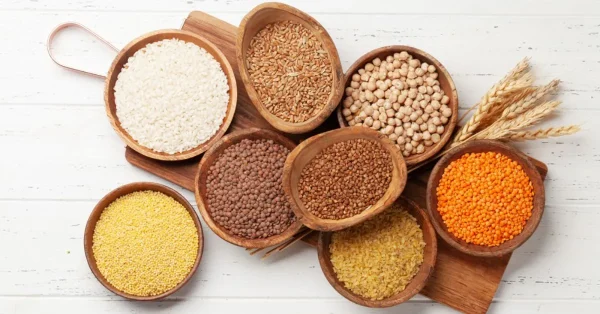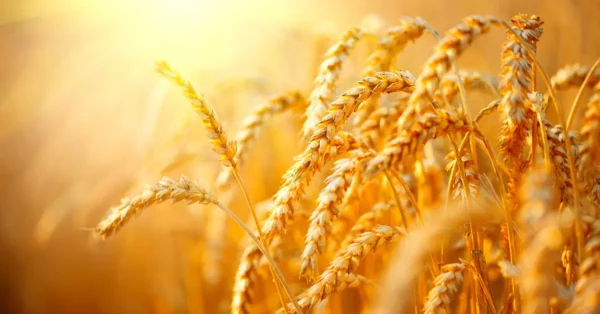
So – gluten. Maybe you’ve heard about it in passing, maybe your doctor just gave you the talk or maybe you’ve had enough of that sluggish, bloated, itchy, brain-fog feeling that seems to follow every sandwich. Either way, the gluten free life is calling. Or at least knocking. The only problem? No one handed you a simple manual. Until now.
Let’s strip this back and walk through what gluten is, where it hides, why it matters and how to navigate it all without becoming the person who’s scared of food. Because honestly? Gluten free doesn’t have to be confusing – or bland.
So… What Actually is Gluten?
Gluten is not poison. It’s not evil. It’s just a protein. Specifically, gluten is found in wheat, barley and rye. It’s the stuff that gives bread its stretch and pasta its chew. Without gluten, a pizza crust turns into something between a cracker and a science experiment – unless you learn how to work with alternatives (we’ll get there).
But here’s the kicker: for some people, gluten is more than just an ingredient. For folks with coeliac disease, it triggers an autoimmune response – basically, the body attacks itself when gluten shows up. That’s not just a stomachache; it’s long-term damage to the small intestine, and yeah, it’s serious.
Then there’s non-coeliac gluten sensitivity. The reaction isn’t autoimmune, but the symptoms can be just as awful – bloating, fatigue, joint pain, skin issues, you name it. And you don’t have to have a formal diagnosis to know that eating a bagel makes you feel like you swallowed a brick. Your body’s vote counts.
Where Gluten Hangs Out (Hint: Not Just in Bread)
You’d think the biggest gluten bombs would be obvious. And sure, things like pasta, cakes, muffins and beer are front and center. But gluten has a sneaky side hustle – it shows up in sauces, stocks, marinades, processed meats, candy, spice mixes and even things like instant coffee or pre-shredded cheese.
Seriously. Gluten has range.
This is where label reading becomes a survival skill. You’ll get quicker with time – promise.

The Big Four Grains to Avoid
Let’s keep it simple. These are the usual suspects:
- Wheat – this includes spelt, durum, semolina, farro and even wheat starch unless it’s specially treated.
- Barley – often hiding in malt extract, malt vinegar and beer.
- Rye – mostly in bread and cereals, but still worth watching.
- Triticale – a hybrid of wheat and rye. Rare, but not impossible to spot.
Oats are a grey area. Oats contain a similar protein called avenin, which some coeliacs react to. So, if you’re coeliac? It might be best to skip them unless you’ve done an oats challenge under medical supervision.
Okay, So What Can I Eat?
This is where people panic – but don’t need to. Most whole foods are naturally gluten free. Fruits, veggies, meats, fish, eggs, dairy, nuts, seeds, rice, potatoes, corn, legumes… it’s actually kind of beautiful when you realize how much you can still eat.
On the grain side, your new pantry staples might include:
- Rice – from basmati to jasmine to arborio (hello, risotto).
- Quinoa – fluffy, nutty, full of protein.
- Buckwheat – has “wheat” in the name but is totally gluten-free.
- Millet – underrated and comforting.
- Amaranth, sorghum, teff – slightly more niche, but full of character.
And don’t forget – there’s a growing army of gluten-free products out there. Bread, pasta, wraps, cookies, crackers, beers and even frozen pizzas. Some are excellent. Some taste like disappointment. You’ll learn what you like, one product at a time.

What About Eating Out?
Here’s where it gets interesting. Or stressful, depending on your confidence level. Not all gluten free meals are created equally. Some are made without gluten ingredients but cooked in the same fryer or on the same grill as gluten-heavy foods. That’s called cross-contamination and it can be just as harmful as the ingredient itself if you’re coeliac.
A few tips:
- Call ahead: Ask if they can prepare a gluten free meal separately. Most places appreciate the heads-up.
- Ask specific questions: Don’t just say “Is it gluten-free?” Try: “Is this made with gluten-free ingredients and is it cooked on a clean surface?”
- Be polite, but assertive: You’re not being annoying – you’re protecting your health.
Pro tip: Mexican and Thai restaurants often have naturally gluten free options (corn tortillas, rice noodles), while Italian spots usually have gluten free pasta available. Bakeries and pubs? Tricky. But more places are catching on and getting better.
Common Mistakes When Starting Out
We all make them.
- Assuming gluten free = healthy
Not necessarily. A gluten free biscuit is still a biscuit. Some gluten free packaged foods are even higher in sugar, fat or additives. Read the label. - Trusting vague labels
“Wheat-free” isn’t the same as “gluten free.” Neither is “organic,” “natural” or “gut friendly.” You need the words: gluten free. - Skipping the binder
If you bake without gluten and don’t add a binder (like xanthan gum or psyllium husk), your muffins may crumble like dry sand. Ask me how I know. - Forgetting about drinks
Some beers, malted milk drinks and pre-mixed spirits contain gluten. Stick to gluten free labelled beer, wine, cider and spirits like vodka or gin (distilled = generally safe).
Pantry Tips That Will Save You
Your kitchen doesn’t need a full renovation, but it does need a reset. If you live with gluten eaters, have a plan:
- Separate toaster – seriously, crumbs travel.
- Color coded chopping boards – so you’re not slicing gluten free bread on a flour covered surface.
- Dedicated condiments – double-dipping a butter knife into a jam jar = contamination central.
It sounds intense… but it becomes normal.
And you know what? Once you’ve got a system, cooking becomes way easier than constantly second-guessing store-bought meals.
Hidden Gluten – The Surprising Places It Lurks
Let’s talk about a few products that people think are safe, but often aren’t:
- Stock cubes and gravy powder – thickeners usually contain wheat.
- Soy sauce – most contain wheat. Tamari is your friend.
- Candy – some use glucose syrup from wheat or wheat flour as a binder.
- Roast chickens – supermarket versions are sometimes injected with seasoning blends that contain gluten.
- Pre-marinated meats – again, check for sauces, thickeners and mystery flavoring agents.
Notice the theme? If it’s been flavored, coated or thickened… read the label.
Emotional Real Talk: It’s Not Just About the Food
Let’s not pretend this is only about ingredients. Going gluten free means dealing with other people’s comments, awkward restaurant moments and sometimes grieving your old favorite meals.
It can feel isolating at first. Like you’re always the one with the “special request.” And yeah, sometimes you’ll eat the salad while everyone else eats garlic bread and you’ll wonder: is it worth it?
Then one day, you’ll finish a delicious, satisfying meal – maybe one you cooked yourself – and feel nothing. No bloating. No headache. No fog. Just energy. And that feeling? That’s worth everything.
You’re not just avoiding gluten. You’re reclaiming how your body feels.
And Finally – You Don’t Have to Be Perfect
There will be mistakes. You’ll miss a label. You’ll trust the wrong menu item. You’ll eat something that looks totally fine and then… regret it. That doesn’t make you a failure. It makes you human.
What matters is learning as you go. Building a rhythm. Finding your own version of gluten free that works for your body and your life.
And hey, if you find a gluten free donut that doesn’t taste like cardboard? Tell everyone. Share the love.
Because gluten free life doesn’t have to mean boring, complicated or miserable. It just means different. And sometimes – better.
